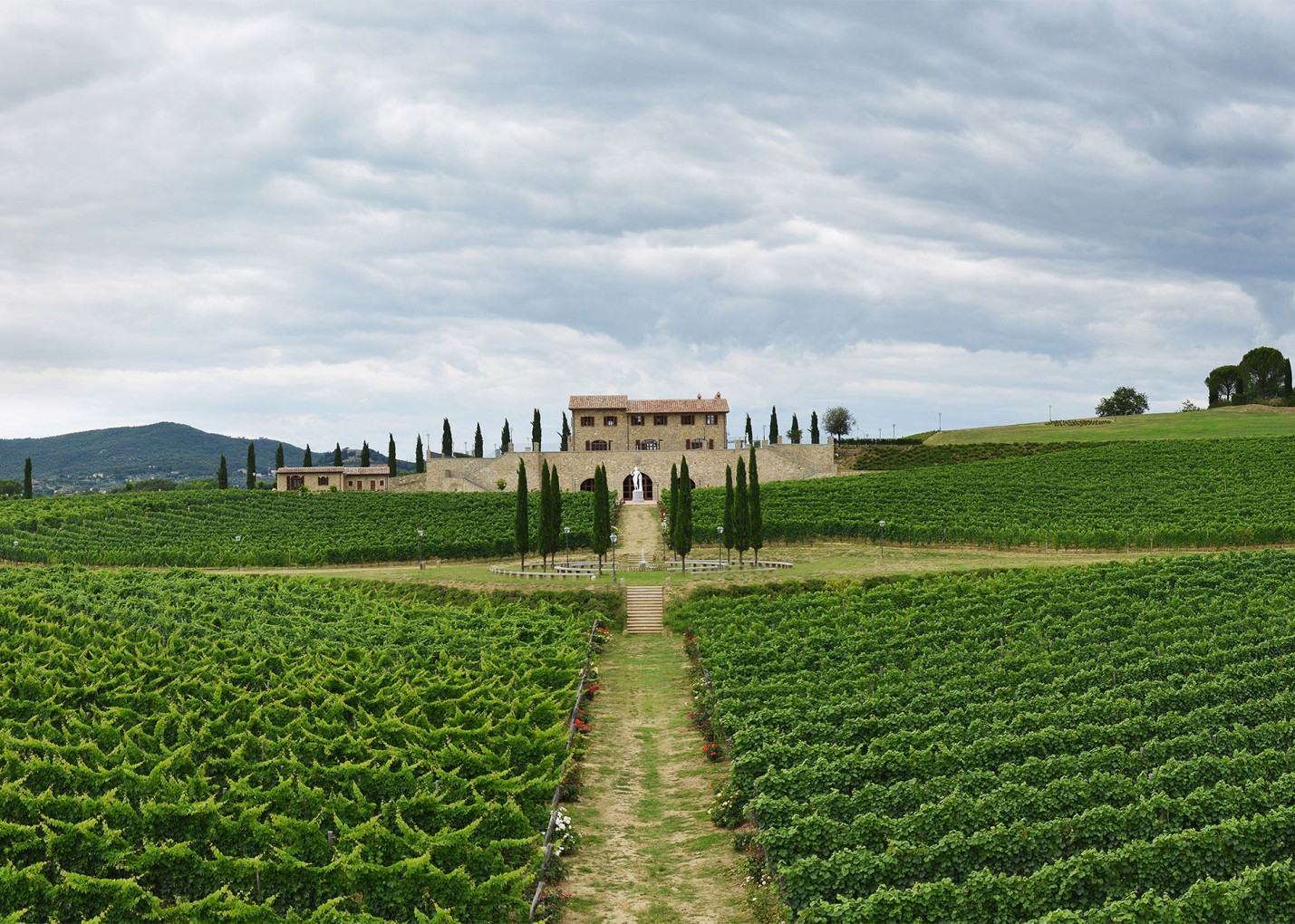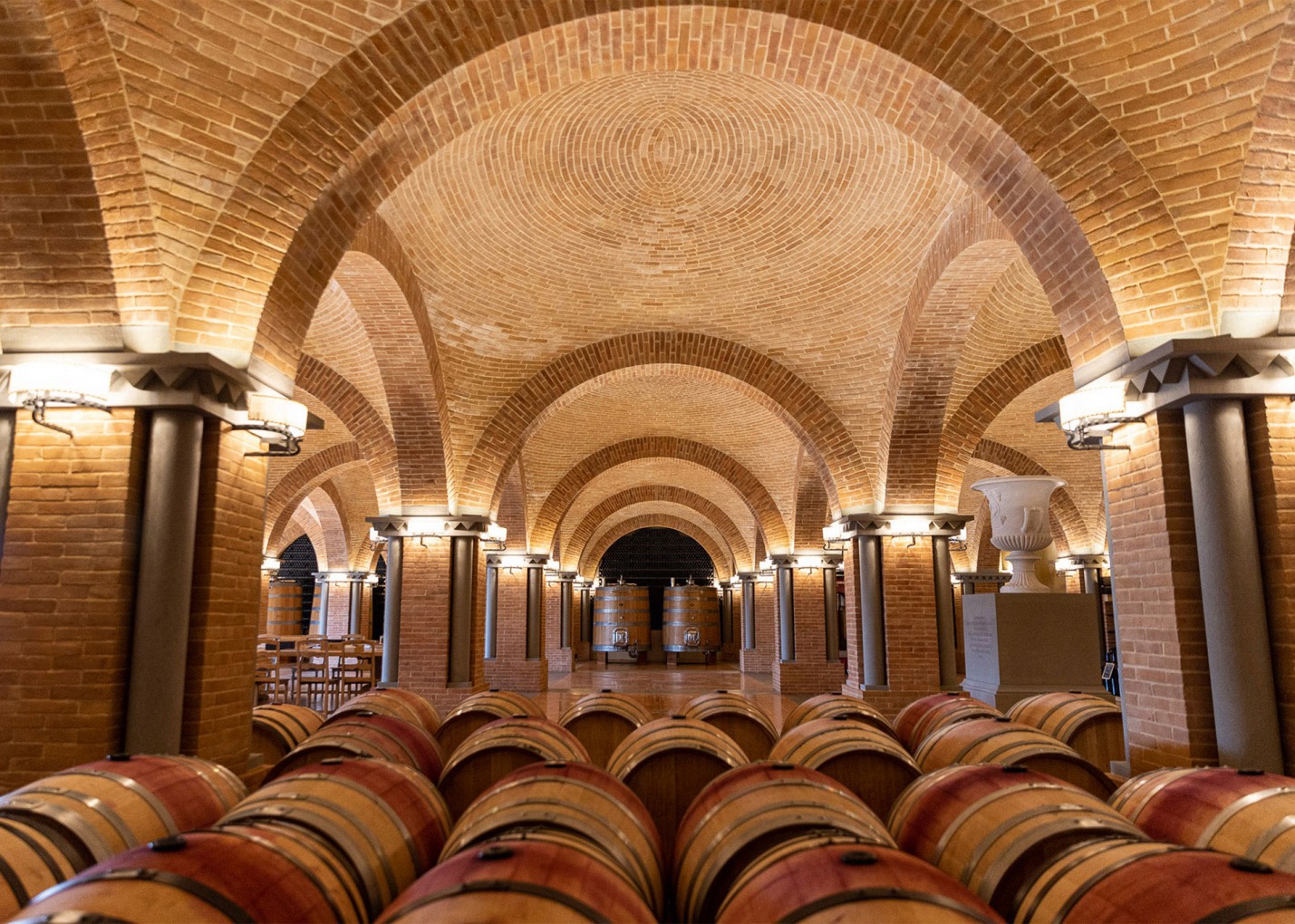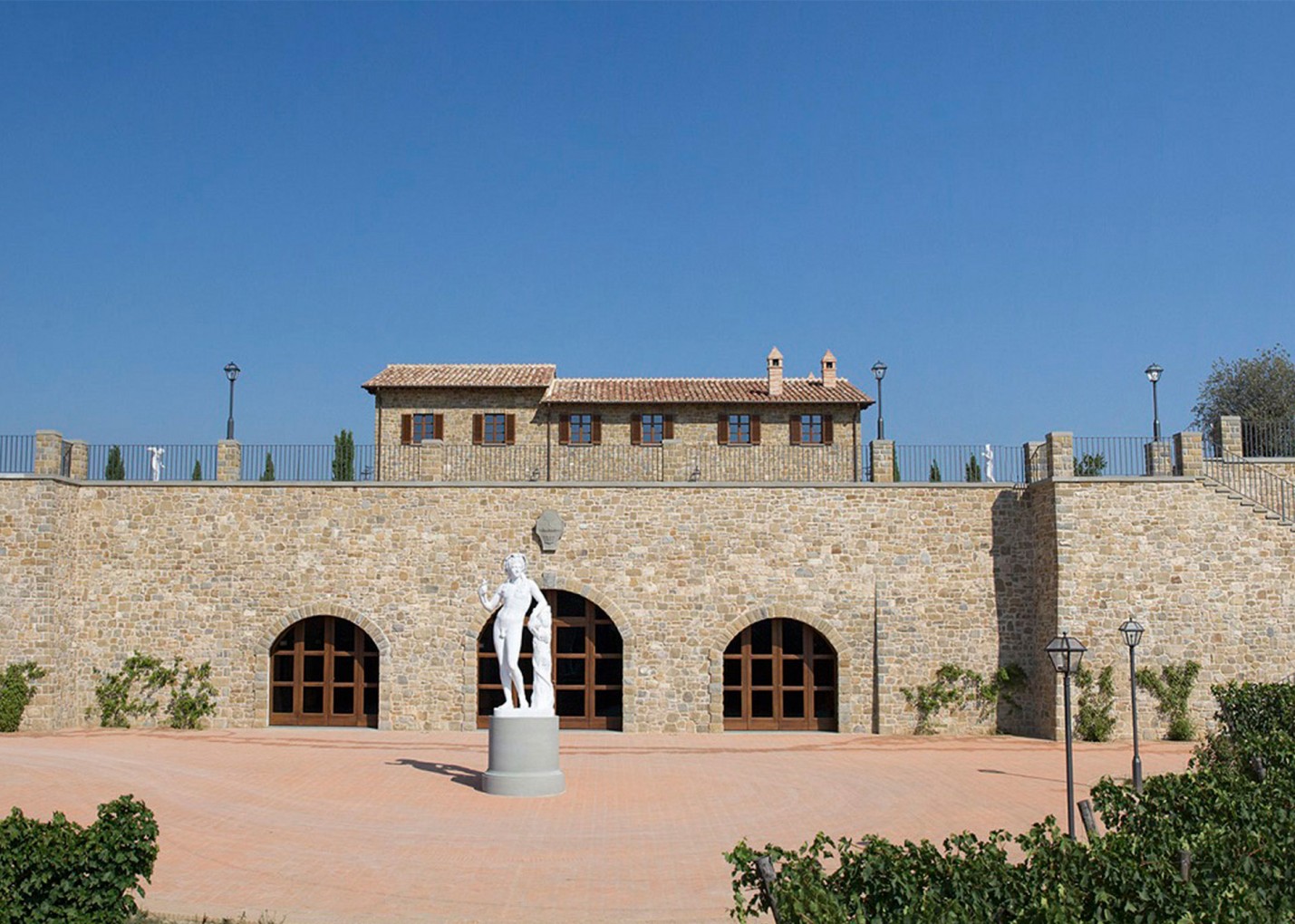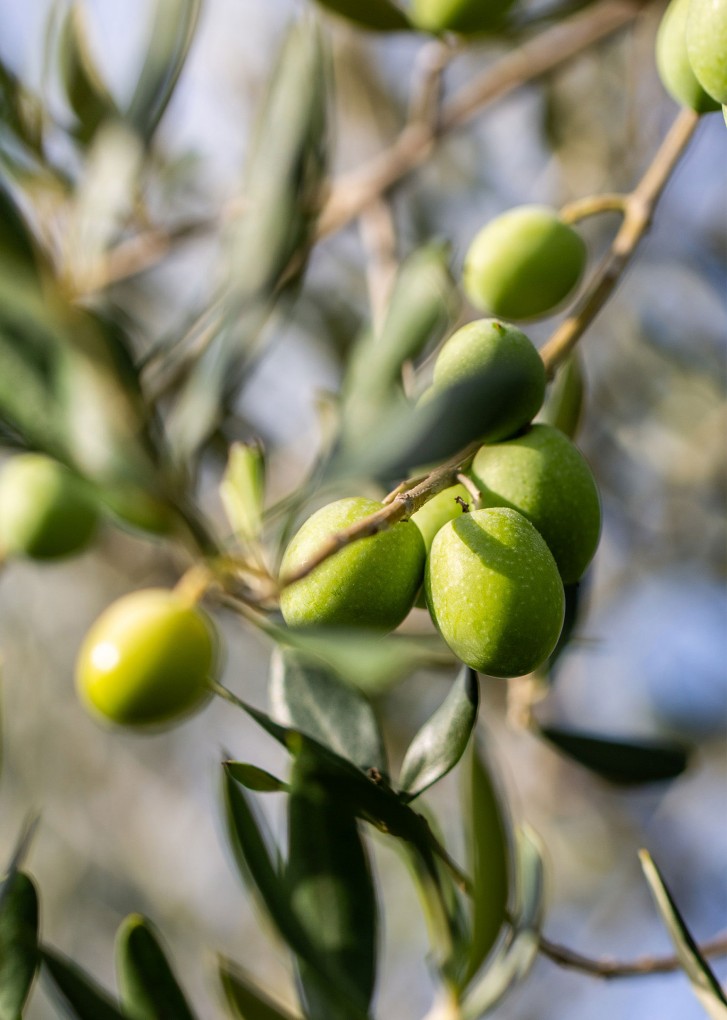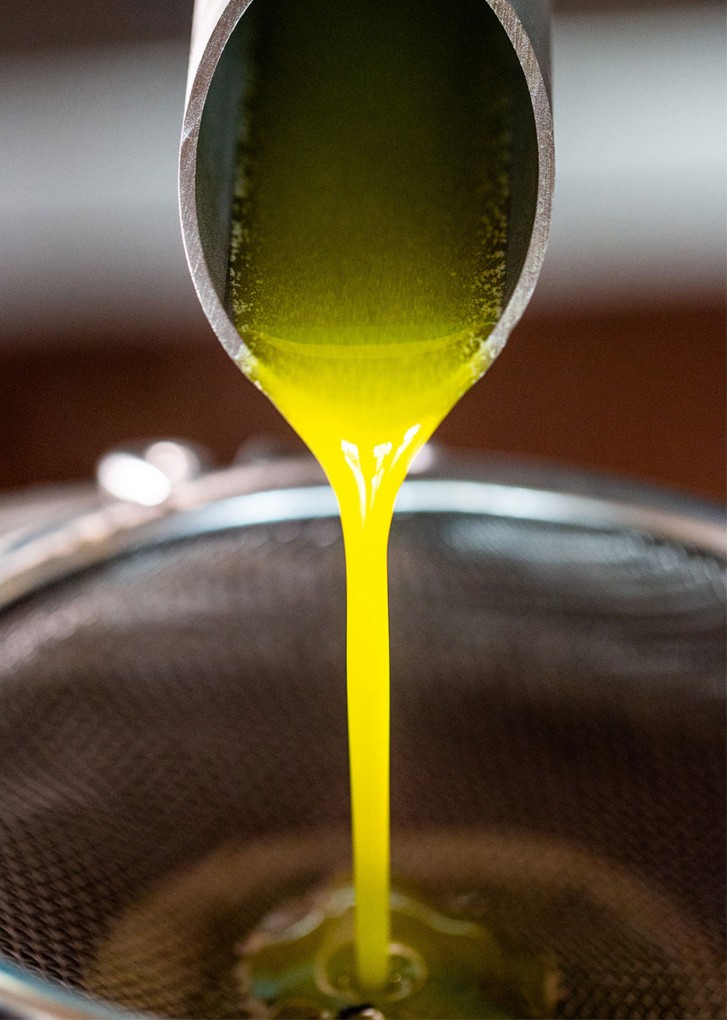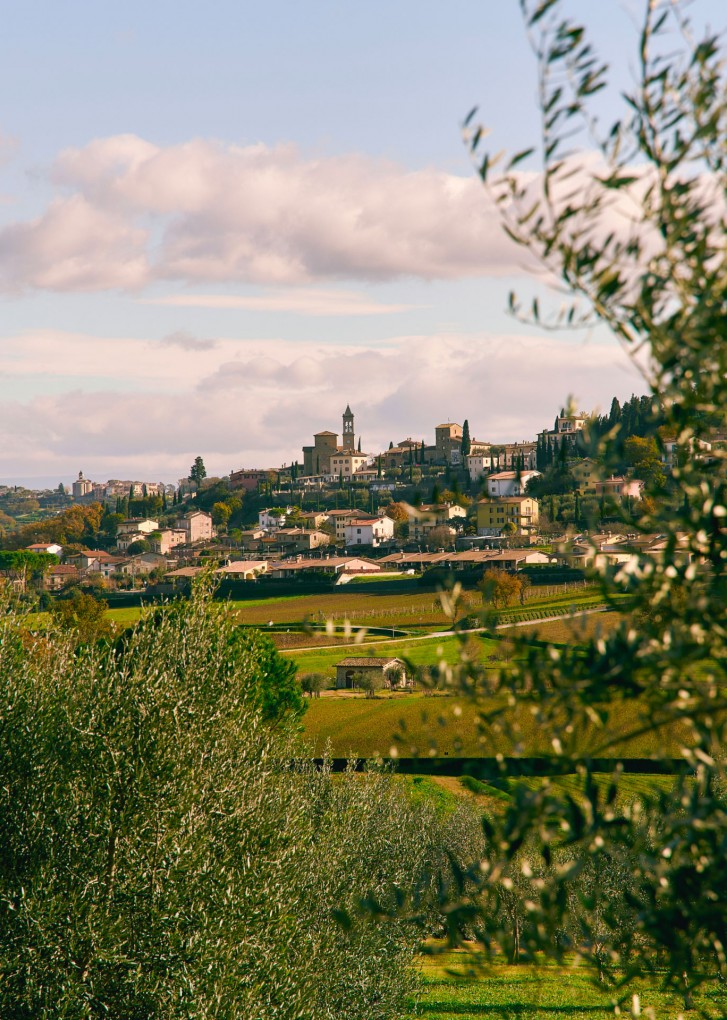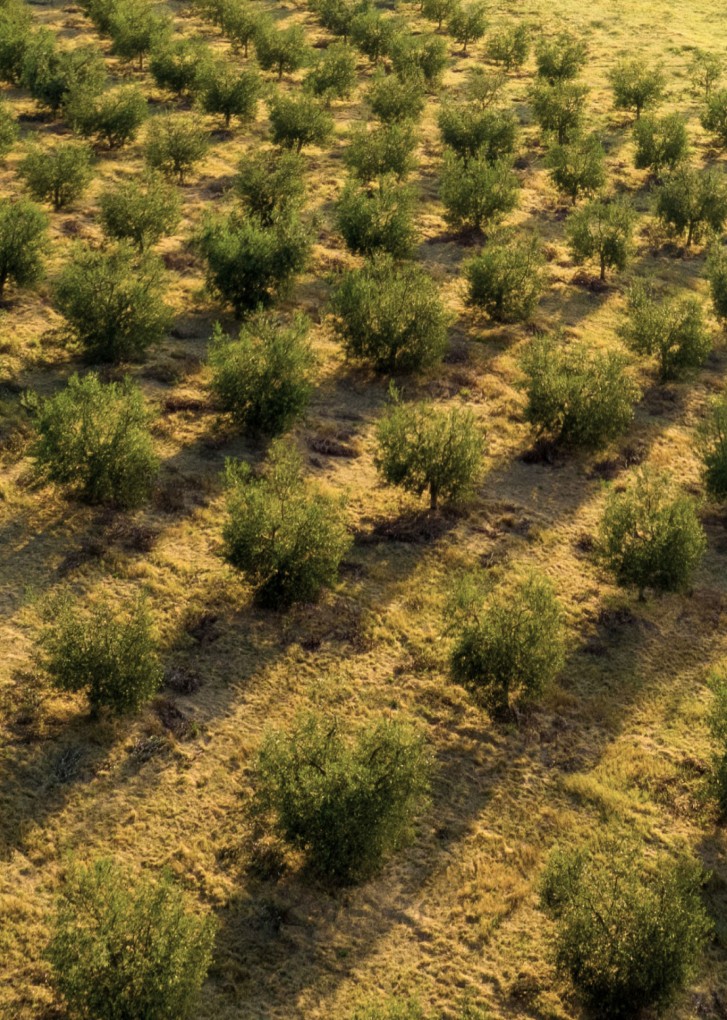The history of Solomeo has always been intertwined with that of its land. Framed by peaceful woods, the profile of the hamlet is reflected on sunny soils which, as the seasons change, are enriched with fruits with the most varied colors and fragrant scents.
These precious gifts of the earth grow and mature slowly in the lands at the edge of the hamlet, where the Agrarian Park was created in 2018, a dream strongly endorsed by the Brunello and Federica Cucinelli Foundation.
The crops follow the rhythms of nature: ancient processes and manual techniques take care of the vineyard, the olive grove and the cultivated land, honoring sacred Mother Earth with each harvest for the genuine goodness of the fruits donated.
The vineyard moves sinuously over land covering five hectares, arranged in rows with soft lines that converge in the two central circles. Inspired by the forms of late-Renaissance gardens, it is particularly reminiscent of the parterre of the Medici Villa della Petraia in Florence.
In the background of the vineyard stands the Winery, introduced by the words of Brunello himself:
Mother Earth is a universal sacred value,
and the wine cellar is the temple I dreamed of dedicating to her.
At its entrance is a large sculpture of Bacchus, visible from every part of the vineyard and from Solomeo’s lofty terraces. The stone façade protects the interior of the Winery designed with large brick barrel vaults that diffuse the light with a solemn, almost sacred effect.
The grapes of four renowned varieties grow and ripen between the rows of the vineyard, from which the Castello di Solomeo wine is born: Cabernet Franc, Cabernet Sauvignon, Merlot, originating from the French tradition and common in Italy, and Sangiovese, a variety typical of the central regions of Italy.
Further on, towards Vignaia, comes the olive grove which extends over soft hilly terrain sloping gently upwards towards the town from the Agrarian Park.


